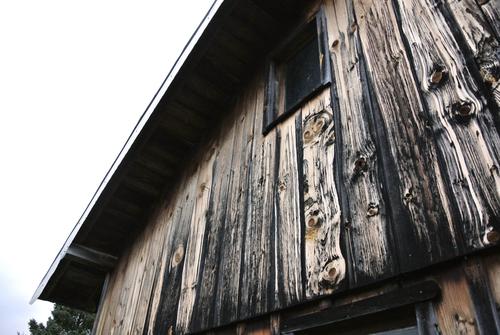 I really like the stark contrast of the light pine colour and the dark
streaks.
I really like the stark contrast of the light pine colour and the dark
streaks.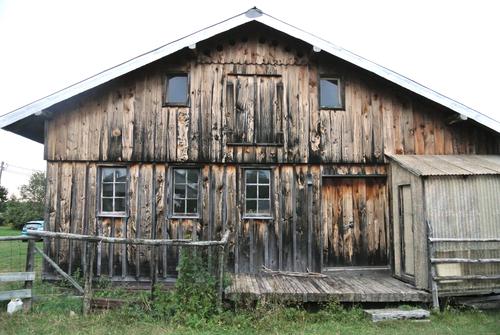 One normally expects weathered wood to be a uniform dark grey, but for some
odd reason, some of the wood on my dad's shop just refuses
to go that way. The shop was
built in 1986, and now, in 2013, on the south and west walls, much of
it is still light in colour.
One normally expects weathered wood to be a uniform dark grey, but for some
odd reason, some of the wood on my dad's shop just refuses
to go that way. The shop was
built in 1986, and now, in 2013, on the south and west walls, much of
it is still light in colour.
 I really like the stark contrast of the light pine colour and the dark
streaks.
I really like the stark contrast of the light pine colour and the dark
streaks.
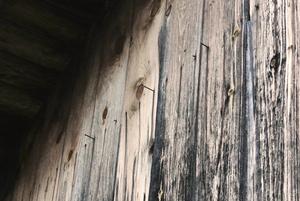 Some of the nails have started to work their way out of the wood too,
though only in a few spots. Very odd to see that sort of thing happen
with wood. Also neat how the rust streaks exactly follow the grain.
Some of the nails have started to work their way out of the wood too,
though only in a few spots. Very odd to see that sort of thing happen
with wood. Also neat how the rust streaks exactly follow the grain.
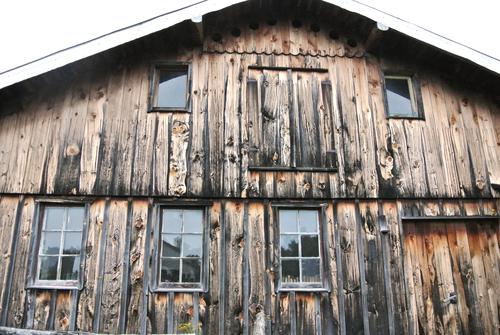
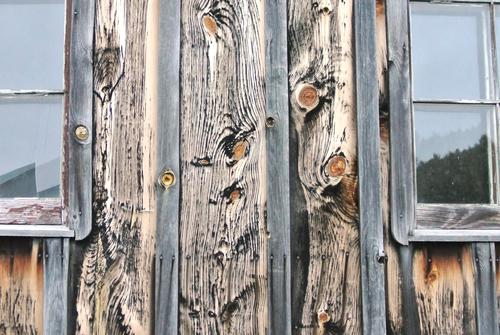
On close examination, even the light coloured parts of the wood have a fair
bit of wood weathered away, with the softer part of the growth having grooves
as deep as 1 mm.
Wherever the wood is under any sort of overhang, it's consistently dark. This would suggest that it's driving rain that washes off greying wood. And that would also explain why the south and west sides have clear areas, whereas the east side, with no driving rain, is a uniform grey.
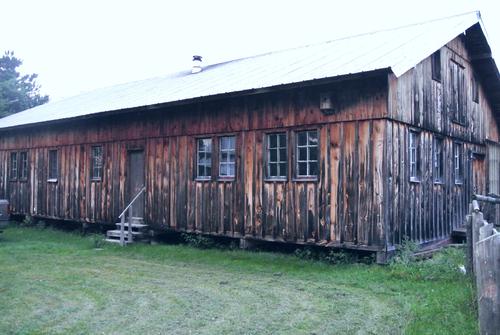 I suspect the wood is white pine, just based on its weather resistance
and the very large knots in some of the wood. White pine trees tend to have fewer
but large branches, making for some large knots.
I suspect the wood is white pine, just based on its weather resistance
and the very large knots in some of the wood. White pine trees tend to have fewer
but large branches, making for some large knots.
None of the wood on the workshop ever received any wood preserver, stain, or other treatment.
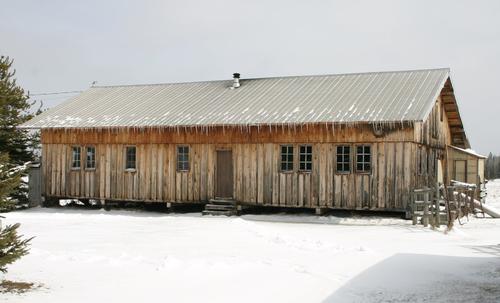
The workshop in 2007 |
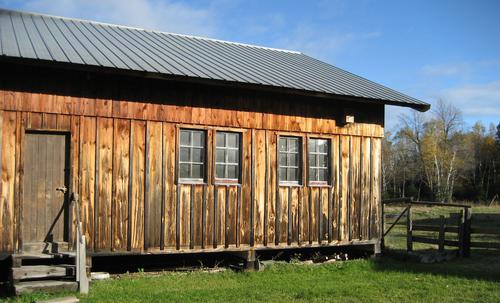
The workshop in 2012 |
Looking at the house my dad built in 1994, the hand split cedar shingles,
on the east side are uniformly grey, but on the north side, they are weathered clear
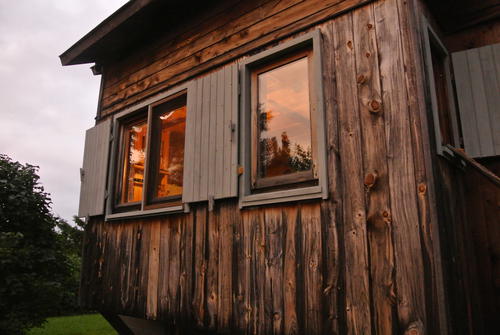 Sometimes, in advertisements or on decorating websites, you can see
gleaming outdoor wooden walls.
Without exception, these are pictures of brand new structures - because wood weathers.
Varnishes and sealers can prevent weathering, but varnishes crack and peel from the
ultraviolet light, and sealers must be periodically renewed. A gleaming wood wall
never stays that way. If you use wood outside, expect it to weather.
Sometimes, in advertisements or on decorating websites, you can see
gleaming outdoor wooden walls.
Without exception, these are pictures of brand new structures - because wood weathers.
Varnishes and sealers can prevent weathering, but varnishes crack and peel from the
ultraviolet light, and sealers must be periodically renewed. A gleaming wood wall
never stays that way. If you use wood outside, expect it to weather.
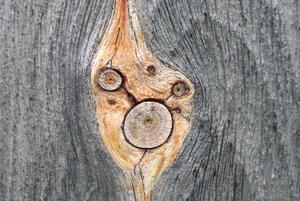
If you are lucky, the weathering looks nice. But, depending on wood species,
it's likely to end up grey, or grey with black streaks.